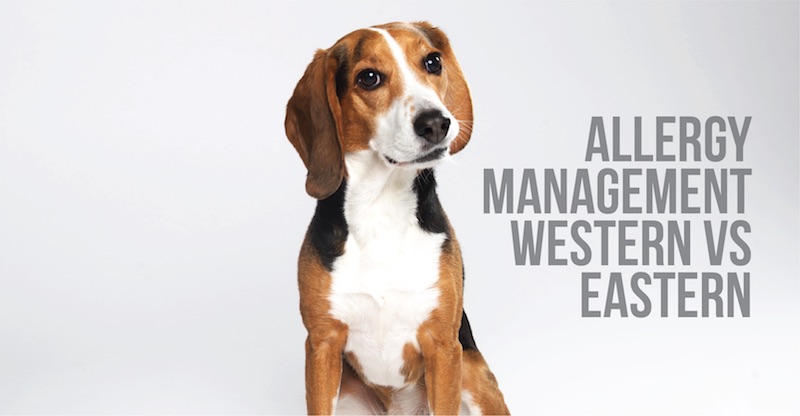(If you haven’t already, check out our precursor post – Boiling Over: An Intro to Allergies)
If you’ve ever been around an allergic dog, it’s difficult not to empathize with his discomfort: constantly itching to the point of scratching himself raw, endless panting, a greasy coat that postpones belly rubs. And all because of what? Being a typical dog and rolling around in the grass?
You ache to help your dog return to his normal, frolicking self. But how? You whisk him off to the vet for some help. The vet prescribes your dog some corticosteroids to treat his itching, which at first seem to help. But, in addition to the frequent accidents the steroids caused, you found that the itching was only temporarily suppressed and has now returned with a vengeance.
After months of this cycle, you become frustrated at the inability to find anything that brings relief for your suffering dog. Why do these symptoms keep coming back!?
Allergy Misconception #2: Treating the symptoms of an allergy is essentially treating the allergy as a whole
Supplements to Support Skin and Coat Health:
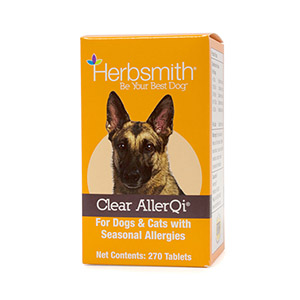
Clear AllerQi
Naturally cools skin and is recommended for use in dogs and cats with seasonal allergies (pair with Milk Thistle and Glimmer for extra support during allergy season)
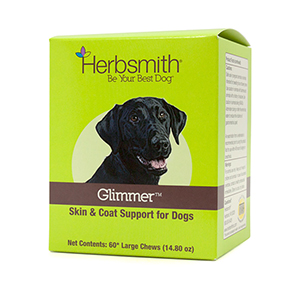
Glimmer
contains essential omega 3 and omega 6 fatty acids (EPA, DHA, and GLA) for healthy skin and a glossy coat in dogs
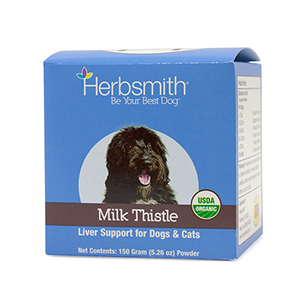
Milk Thistle
Maintains normal, healthy liver function by supporting the body from exposure to heavy metal or environmental toxins. Also promotes health waste elimination and supports hepatic function
Allergies and Weeds
When you take care of your lawn in the spring, you may deal with the (seemingly unending) task of pruning weeds. Getting rid of weeds in the yard takes time, but it’s important that time is dedicated to an effective form of lawn-treating. Would you go out back with a pair of scissors and snip away at the visible part of the weed? Of course not. That would be a horrible use of time and energy because the weed will just continue to grow. All you’ve done is effectively dealt with the problem you could immediately see—an “out of sight, out of mind” lawn treatment if you will. There’s still the buried root that will continue to cause problems in your yard until it’s removed completely.
The issue with traditional Western medication is that it addresses the symptoms of allergies (or rather, the top half of the weed). And while this may ease your dog’s discomfort temporarily (or make your lawn look nice for a couple weeks), it ultimately does more harm than good long-term. Treating symptoms with antihistamines and corticosteroids does not address the root problem. And often times these types of drugs cause negative side effects, only to have the allergy return more aggressively the following season. It’s a vicious cycle of suppressing and worsening symptoms.
Prescription drugs weaken the liver’s ability to filter out all the toxins and free radicals. These will slowly accumulate, eventually blocking the regular flow of the liver. As the liver becomes overwhelmed with its workload, unable to remove toxins from the body as quickly as the body takes them in, it will begin to up the security level for foreign particles entering the body (this is what causes allergies to get increasingly more severe each season when treated with steriods and antihistimines). Each time the allergen returns, the body will try to fight it off, thinking it’s yet another harmful toxin that the already-stagnant liver will have to filter out.
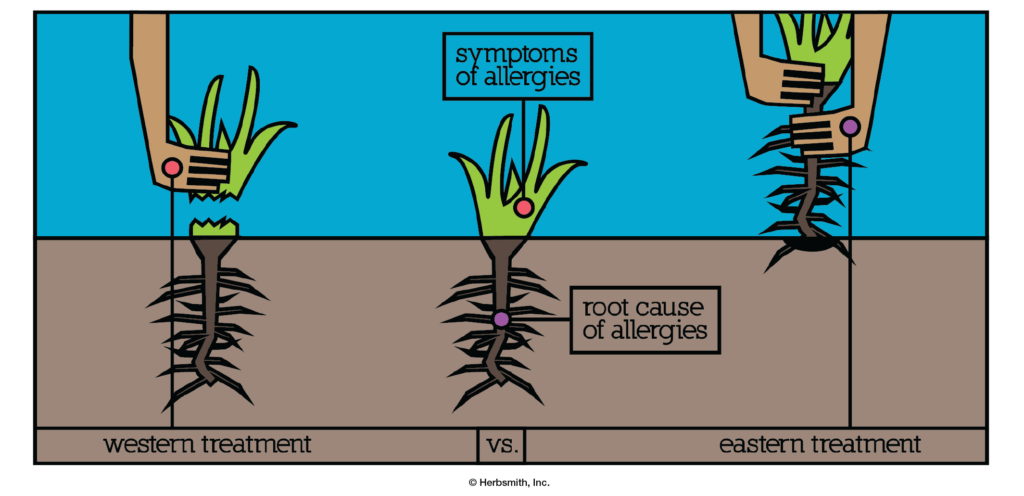
Luckily, there’s a more effective way to deal with allergies. Regardless of what stimulates the allergic reaction, what really needs the attention is the immune system (more specifically, the liver). Often times, we assume an allergic reaction is the result of an underreacting immune system. But in reality, allergic reactions occur due to an overreaction (or hypersensitive reaction) of the immune system.
Holistic veterinary medicine is about treating the root problem. In treating the underlying issue, you also address the symptoms. In other words, rather than trimming the top part of the weed so your lawn appears clear of unwanted plants, holistic allergy treatments remove the entire weed—roots and all. Rather than loading the body up with the tools to combat the symptoms of the allergy, holistic medicine opts to support the normal function of the liver so that it can do its job in balancing the rest of the body. While it may take a couple seasons for the “weed” to stop returning (especially in the pets who’ve previously been on prescription medication), natural treatment and support for the liver will ultimately give the body the tools to focus the immune system on the actually harmful intruders.
Similar Posts:
- Learn about how you can naturally protect and repair your pet’s liver here.
- Learn how to use your dog’s diet as a natural medicine for allergies here.
- Learn how to eliminate problem foods from your dog’s diet here.
- No allergies but want to maintain her healthy skin and coat?
- Learn about the useful kinds of fats and omegas here.
